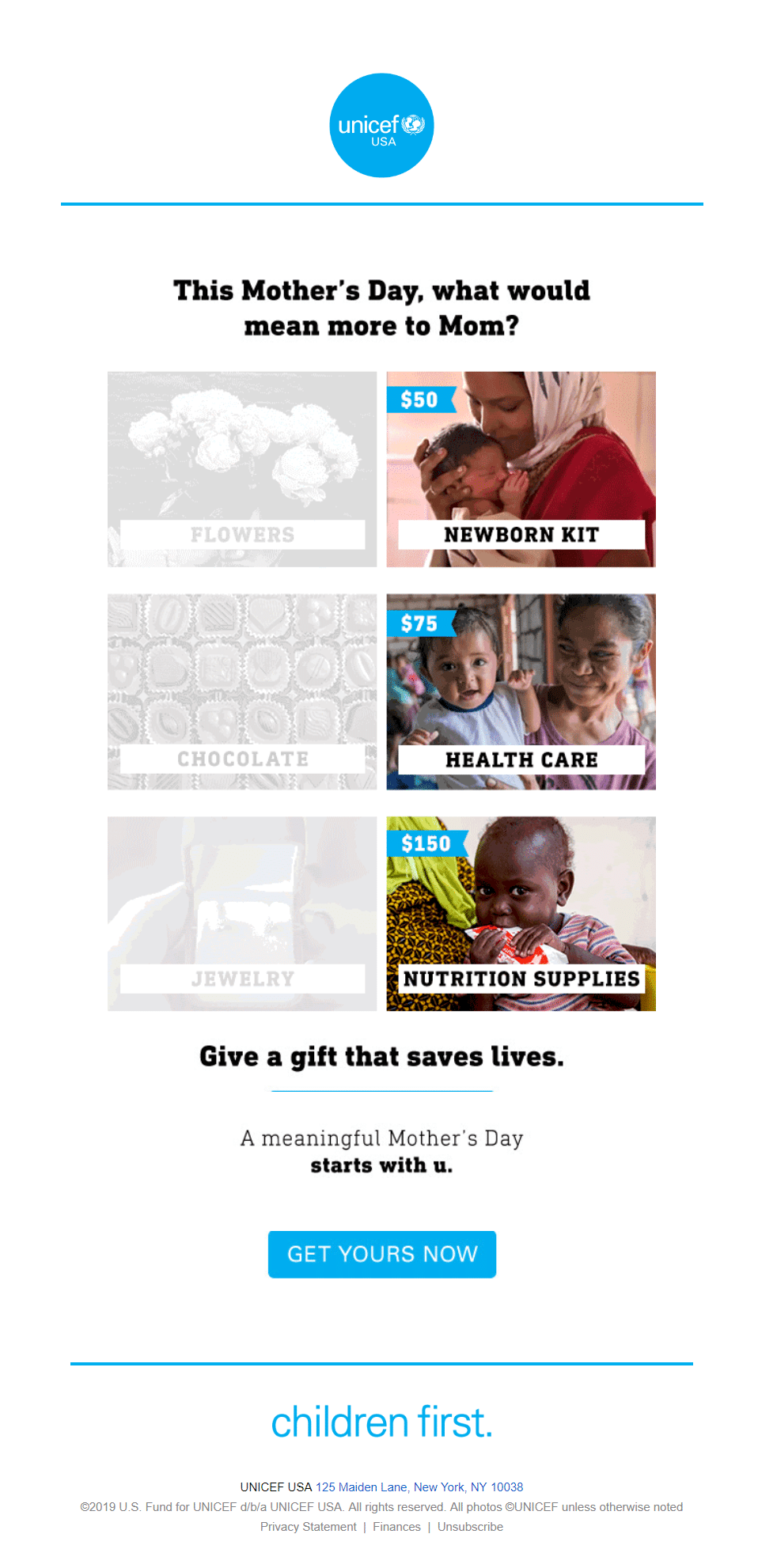When marketers develop their email strategies, they tend to use email campaigns to supplement other marketing efforts. Driving traffic to specific landing pages is great if you’re selling a product or service—but what about publishers?
What’s a marketer to do when they need to monetize their content itself?
Our friends at Sailthru recently put together an excellent article about how top publishers monetized their email newsletters. We summarized some of the strategies below, along with some examples and added a few examples of our own, so you can start making money directly through your newsletter.
How to get started monetizing your email newsletters
According to the latest figures from Radicati, 347.3 billion emails will be sent each day by 2023. Furthermore, the number of people using email will grow from 3,930 million in 2019 to 4,371 million by 2023.
When given a choice, 61% of people prefer to hear from brands via email over other marketing options like direct mail, social media, and even branded mobile apps.
Email puts your readers in control of the conversation. For publishers, this is an excellent opportunity to develop a one-on-one relationship with your audience, without fighting social media algorithms or paying for advertisements.
Use email campaigns to generate website traffic
For small or new publishers, stretching your marketing budget and generating website traffic is critical. Facebook algorithms aren’t friendly towards new pages unless you’re willing to spend big bucks on sponsored posts. Some published posts are lucky to organically reach 10% of their audience.
Email, however, gives you a direct line of communication with your audience.
Encourage paid subscriptions—both digital and paper
While traffic is nice, it’s also nice to enjoy a steady stream of income that doesn’t rely on meager advertising payouts from Google or Revcontent. If you already have a solid and loyal following, you could consider promoting paid subscriptions.
You have two options: digital and physical. Digital subscriptions are an excellent way to generate revenue without budgeting for the resources printing requires.
Provide your readers with a specific number of free articles each month or week (most publishers choose two, five, or ten pieces). Install a plugin that alerts readers to how many free articles remain before they get cut off, along with a form to subscribe.
Casual readers will still be able to access your content for free, but those who consume the most will have the option of paying for your services.
Promote paid events
Hosting an event can help you generate revenue as a publisher while boosting brand recognition in the process. Plus, you get to have one-on-one real-life conversations with your readers.
Use email marketing to create an automated campaign leading up to the event to promote your registration. Send out various emails promoting individual speakers and topics. Include some reminder campaigns for subscribers who haven’t registered yet, letting them know that it’s not too late.
Fundraise
National Public Radio (NPR) runs fundraisers every season. You don’t have to hold fundraisers quite as frequently as huge publishers like NPR, but you can use email marketing to boost donations.
Create a fundraiser for a scheduled amount of time—a few weeks or a month is perfect. Develop a series of triggered campaigns that’ll go out at staggered times and days.
Be careful: You don’t want to overwhelm your subscribers. Forty-five of people say they unsubscribe from mailing lists because they receive too many emails. One or two emails per week peppered in between your regular content should be fine, especially among your most active subscribers.
Entice investors and patreon support
Grassroots or indie outlets would probably choose Patreon for sponsorship, while publishers with larger audiences would default for investments.
Publishers looking to target investors can segment their subscriber list based on this information.
Patreon is a great way for small publishers to control their gated content and enjoy a monthly stream of income. Plus, your subscribers can choose preset monthly donation tiers.
Tease content behind a paywall
Consider putting specific pieces of your content behind paywalls and using your email campaigns to promote teasers.
If you run a news website, you could keep your hard news free to access and put your long-form analysis behind a paywall. Run email campaigns with snippets of your analysis pieces that leave your readers asking questions and begging to know what’s inside.
Break your list up into unique segments based on your subscribers’ interests. Does a segment tend to enjoy content about Asian stock markets? Middle East geopolitics? US domestic politics? Use that information to promote specific pieces of gated content.
Consider adding special services
When monetizing their email newsletters, publishers must get creative sometimes to find interesting and ethical methods. Depending on your type of content, you could offer special paid services to your audience like:
- Risk assessment consulting for businesses looking to expand in conflict zones or emerging markets
- Custom bug out bags for disaster preppers
- Educational courses and webinars on different regions or topics
- Travel packages
7 publishers monetizing their email newsletters
These top publishers are monetizing their email newsletters with the tips above that Sailthru mentioned, along with many other methods.
1. The New York Times
The New York Times started putting their content behind a paywall a few years ago. Readers have access to a few free articles each week before hitting a limit.
Using their email newsletter, the NYT provides subscribers a taste of their content, allowing them to see the high-quality content they’re missing without paying for a subscription.
When it comes to a large outlet like the NYT, regular readers who value their content are likely to pay for a full subscription once they reach the limit. Plus, the NYT has cross-posted a special promotion offering access for as little as $1/week on their Facebook and Instagram stories for months.
2. Harvard Health Online
Harvard Health Online and Harvard Medical School have both also leveraged email to monetize their publishing operations.
Harvard Health puts some of their content behind a gate that readers can access for free after providing their email addresses. Upon registering, new subscribers receive triggered email campaigns with unique content and staggered promotional emails.
Notice how, when monetizing their email newsletters, Harvard highlights their professional authority and background.
Source: Gmail
3. UNICEF
UNICEF relies on donations to fund their humanitarian work around the world. The organization often picks a specific country or issue to highlight—such as Yemen or Sudan—and creates email content based on that topic for a week or two.
UNICEF also recently revamped their email campaigns to include interactive games and differentiated contributions. In the campaign below for Mother’s Day, UNICEF promoted super-niche donation packages.
Source: Gmail
4. Foreign Affairs
A subscription to Foreign Affairs does not come cheap. The magazine understands this and tends to provide snippets of analysis pieces throughout their content.
At certain points throughout the year—such as the holiday season—Foreign Affairs will also promote their yearly subscriptions for a generously reduced rate that’s unheard of during other times of the year.
Pay special attention to trends like this when monetizing your email newsletters.
Foreign Affairs also understands that not every subscriber will convert into a paid subscriber. That’s likely why they often run sponsored or cross-posted content for their affiliates.
5. The Telegraph
The Telegraph also understands that many people may feel reluctant about paying for something they can’t physically touch.
Through email, The Telegraph periodically sends out promotional emails for their paid subscription service in between general curated update emails.
The Telegraph informs subscribers about the price up front and lets them know they can cancel at any time within 30 days, for no charge.
6. The Guardian
The Guardian took a unique approach to monetizing their email newsletter with an online bookstore. Subscribers can browse relevant book selections and make purchases for a reduced cost.
Source: Gmail
7. The Nation
Publisher The Nation also has a special strategy for monetizing their operations. The Nation frequently uses its email newsletter to promote various travel packages.
Take their lead as an example of ways publishers can expand their services in interesting ways beyond simply promoting paid content.
In this email, The Nation promotes its Cuba packages and uses current events about increasing US hostilities towards Cuba to create a sense of urgency.
Source: Gmail
Wrap up
Monetizing your email newsletters isn’t easy, and it’ll take some time. Make sure you visit Sailthru to read their full post to help improve your monetization tactics.
Most publishers need to try a few different monetization methods to see what works best for their audience. For example, as you get started, a fundraiser may suit you best. As you grow your audience, you may be able to expand to paid subscriptions or gated content.
Are you looking for fresh ways to monetize and boost engagement? Find out why big-name publishers like Reddit and Vice trust Campaign Monitor.









